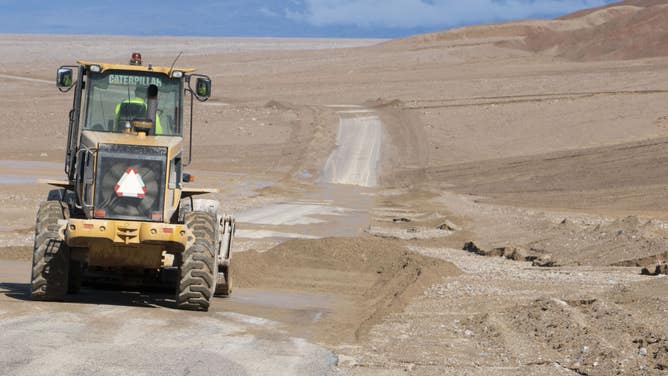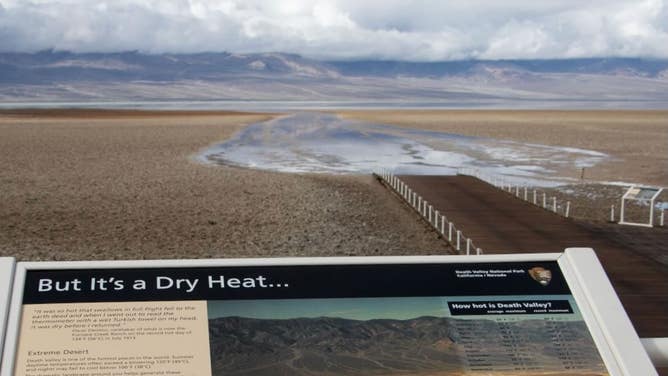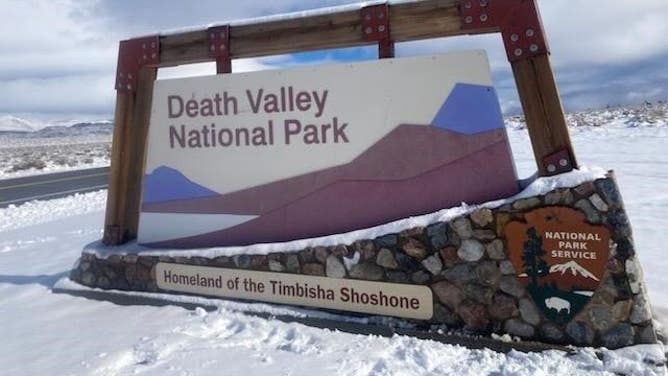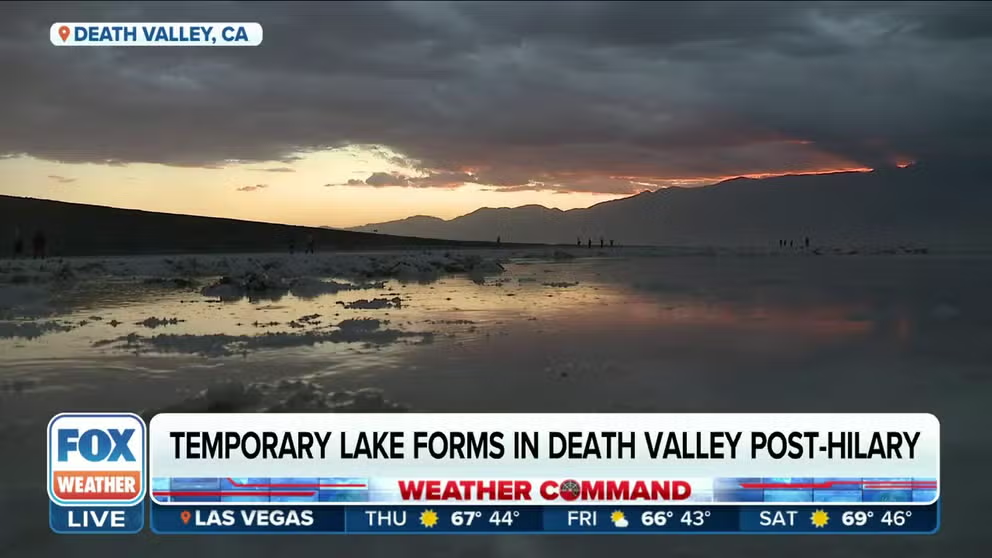Atmospheric river drops snow, floods roads in Death Valley National Park
Officials say the recent flooding has worsened damage at the park that was caused by Hurricane Hilary in August. The rain has also extended the life of an ephemeral lake that developed after Hilary.
FILE: Hurricane Hilary creates lake in Death Valley
Remnants of Hurricane Hilary dropped so much water in Death Valley National Park in August that temporary lakes formed, with some lasting into early November. FOX Weather's Max Gorden reports. Nov. 9, 2023.
DEATH VALLEY NATIONAL PARK, Calif. – The driest place in North America became flooded this week when an atmospheric river storm drenched Death Valley National Park in California.
The storm dropped 1.5 inches of rainfall in just the four days between Sunday and Wednesday, rivaling the park’s annual average rainfall amount of nearly 2 inches, according to the National Park Service.
This downpour prompted the closure of several park roads after flash flooding on Tuesday night. Debris had to be removed from some roads to reopen them, but some side roads remain closed due to storm damage.

A NPS employee uses a loader to clear flood debris off Badwater Road.
(Giovanna Ponce / NPS / FOX Weather)
Park visitors are encouraged to check the Death Valley National Park website for the most up-to-date road closures and conditions information.
CALIFORNIA FACES RENEWED ATMOSPHERIC RIVER STORMS NEXT WEEK
Flooding from the atmospheric river exacerbated storm damage at the park caused by the remnants of Hurricane Hilary on Aug. 20, when 2.2 inches of rain fell on the park in one day.
The recent floods have extended the life of a temporary lake that formed over a salt flat in the park’s Badwater Basin after the downpour from Hilary.

A sign at Badwater Basin describes Death Valley as a hot, dry place. In the background, recent rains have increased the size of the temporary lake, an arm of which now covers the trail.
(Giovanna Ponce / NPS / FOX Weather)
NPS officials said the lake measured 7 miles long, 4 miles wide and 2 feet deep at its largest. By late January, the lake had shrunk to about half that size and measured just inches deep.
"Most of us thought the lake would be gone by October," said park ranger Abby Wines. "We were shocked to see it still here after almost six months. This week’s rain will extend how long the lake is here. It’s too shallow to kayak in, but it makes amazing reflections of the mountains."
DEATH VALLEY NATIONAL PARK FORMS INTO LAND OF EPHEMERAL LAKES
The storm contributed to another otherworldly sight in the driest place on the continent: snow. According to the NPS, snow fell down to about 4,000 feet in the park and left mountains covered in snow.

Snow at Death Valley National Park’s CA-190 west entrance on February 8.
(Elyscia Letterman / NPS / FOX Weather)
Park officials also noted that because of the storms, a "good bloom" is likely to occur during flower season at the park, which runs from late February through early April.
